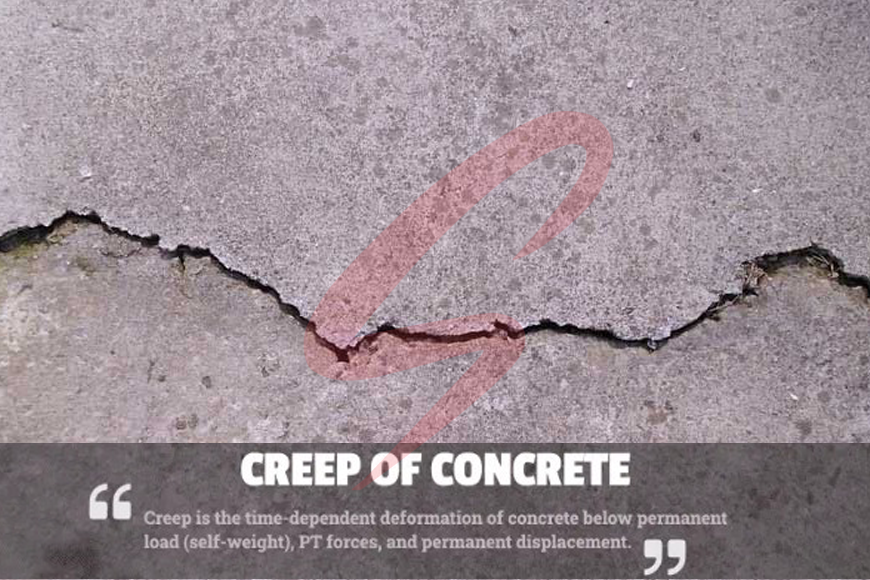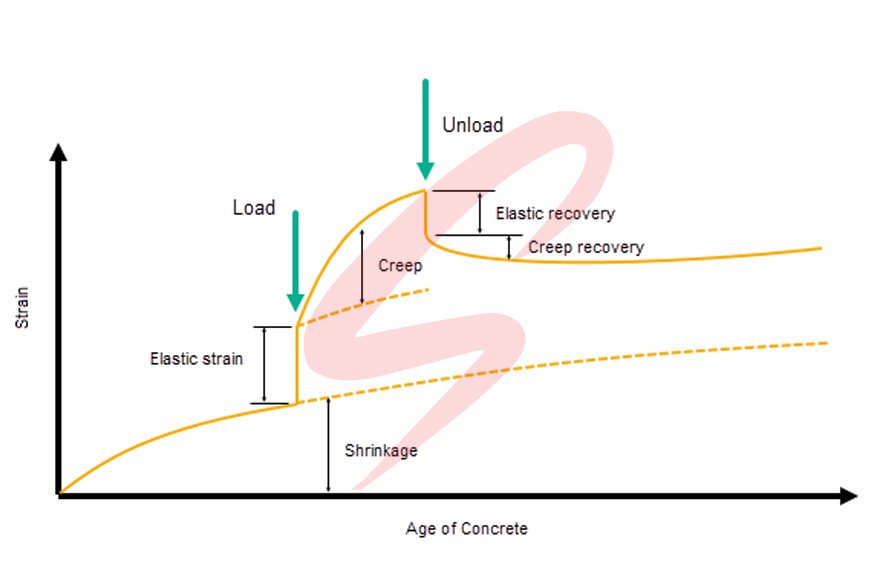Creep and shrinkage are two distinct but related phenomena in concrete that are important considerations in the design and construction of structures.
Creep:
Definition: Creep in concrete refers to the time-dependent deformation or strain that occurs when the concrete is subjected to a sustained load or stress. It is a slow, continuous deformation that takes place over an extended period.
Causes: Creep is influenced by factors such as the magnitude and duration of the applied load, temperature, humidity, and the properties of the concrete mix. Over time, the cement paste undergoes internal adjustments, causing the concrete to deform.
Significance: Creep is particularly relevant in structures that experience long-term loading, such as bridges and buildings. It can affect the long-term performance and stability of a structure, and engineers must account for it in their design to ensure safety and durability.
Shrinkage:
Definition: Shrinkage in concrete refers to the reduction in volume of the concrete as it loses moisture and undergoes drying. This volume reduction can occur during the early stages of concrete curing and throughout its service life.
Causes: Shrinkage is primarily caused by the evaporation of water from the concrete and the chemical processes that occur during hydration. Factors such as the mix design, ambient conditions, and the presence of reinforcing steel can influence the extent of shrinkage.
Types: Shrinkage can be classified into two main types: drying shrinkage and autogenous shrinkage. Drying shrinkage occurs due to moisture loss, while autogenous shrinkage is caused by the self-desiccation of the cement paste.
Effects: Shrinkage can lead to cracking in concrete structures, especially if it occurs unevenly. Proper curing practices and the use of shrinkage-reducing admixtures can help mitigate these effects.
Both creep and shrinkage are considered in structural design codes and standards to ensure that structures are designed to accommodate these deformations over their intended service life. Engineers use various models and factors to account for creep and shrinkage in the design process, helping to create safe and durable structures.




0 Comments